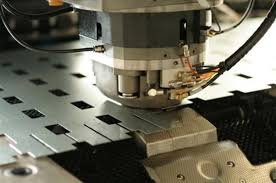Are you curious about the intricate world of sheet metal fabrication? It plays an important role in a variety of industries, including automotive parts and aerospace components. Let’s walk you through everything you need to know about the techniques, from the basics to advanced methods Sheet Metal Fabrication Techniques.
Introduction to Sheet Metal Fabrication
Sheet metal fabrication involves shaping and manipulating thin metal sheets to create various products. Its versatility and ability to manufacture complex forms with high precision make it useful. Whether you’re crafting a custom panel for architectural purposes or manufacturing intricate parts for medical devices, sheet metal fabrication services offer unparalleled flexibility and efficiency in production processes.
1. Cutting Techniques
Cutting is the initial step in the process, where the metal sheet is shaped into the desired form. Techniques like shearing, laser cutting, and water jet cutting are used depending on the thickness and material of the sheet. Laser cutting, for instance, offers exceptional precision by focusing a high-powered laser beam onto the metal. Vaporizing the material precisely along the cutting line. Water jet cutting uses a high-pressure spray of water mixed with abrasive particles to cut through metal, making it perfect for materials that are sensitive to heat or require delicate details.
2. Bending and Forming
Bending and forming are critical processes that give sheet metal its final shape. Press brakes commonly used for bending, allowing precise angles and shapes to be formed with controlled force and accuracy. Roll forming, on the other hand, used for the continuous bending of long strips of metal, making it efficient for the mass production of parts like roof panels, window frames, and automotive components. Each method of forming ensures that the metal retains its structural integrity while achieving the desired shape, which is essential for creating components that meet stringent design specifications.
3. Joining Methods
Joining techniques are crucial for assembling multiple metal parts into a cohesive whole. Welding is the most common method, with options ranging from MIG (Metal Inert Gas) and TIG (Tungsten Inert Gas) welding to spot welding for thinner materials.
Additionally, adhesive bonding and mechanical fastening (using rivets or screws) also employed based on the strength and aesthetic requirements of the final product, ensuring that assembled components withstand operational stresses and environmental conditions.
4. Punching and Stamping
Punching and stamping involve creating holes, indentations, or other shapes in the sheet metal. Punch presses and stamping machines use dies to punch through the metal with precision, forming consistent shapes and dimensions. This technique is vital for creating components like brackets, connectors. And electrical enclosures with uniform quality and dimensional accuracy, essential for ensuring parts fit seamlessly together during assembly and operation.
5. Deep Drawing
Deep drawing a specialized technique used to create hollow, three-dimensional shapes from sheet metal. It involves stretching the metal over a die to form cups, cylinders, or boxes, using controlled pressure to shape the material without fracturing or thinning excessively. This method widely used in manufacturing household items, automotive parts, and even aerospace components because of its capacity to produce complicated shapes with low material waste. Optimizing production efficiency and material utilization in diverse industrial applications.
6. Prototype Development
Prototyping is a crucial phase in sheet metal fabrication. Where initial designs tested and refined before full-scale production. Rapid prototype technologies, including 3D printing and CNC (Computer Numerical Control) machining. Are rapidly being used in sheet metal production processes to shorten development cycles and ensure product quality. These advanced technologies allow manufacturers to quickly create and evaluate prototype parts with precise dimensions and material properties, identifying design flaws or performance issues early in the production process and making necessary adjustments to optimize product functionality and market readiness.
7. Advanced Techniques and Automation
Advancements in technology have revolutionized sheet metal fabrication services, with automation playing a pivotal role in enhancing efficiency and precision. Robotics and CNC (Computer Numerical Control) systems enable complex designs to be fabricated with unmatched accuracy, minimizing errors and maximizing productivity.
Automated systems can perform repetitive tasks such as cutting, bending, and welding with consistent precision, reducing production lead times and labor costs while ensuring uniform quality across batches of fabricated components. These innovations have not only streamlined operations in sheet metal fabrication services but also opened doors to more intricate and customizable designs, meeting the diverse needs of industries ranging from automotive to aerospace.
Mastering sheet metal fabrication techniques requires a blend of skill, technology, and innovation. From cutting and bending to advanced automation, each step contributes to the creation of high-quality, durable metal products across diverse industries. Whether you’re a novice exploring the basics or a seasoned professional keeping pace with technological advancements, understanding these techniques is key to achieving excellence in the sheet metal fabrication industry.


